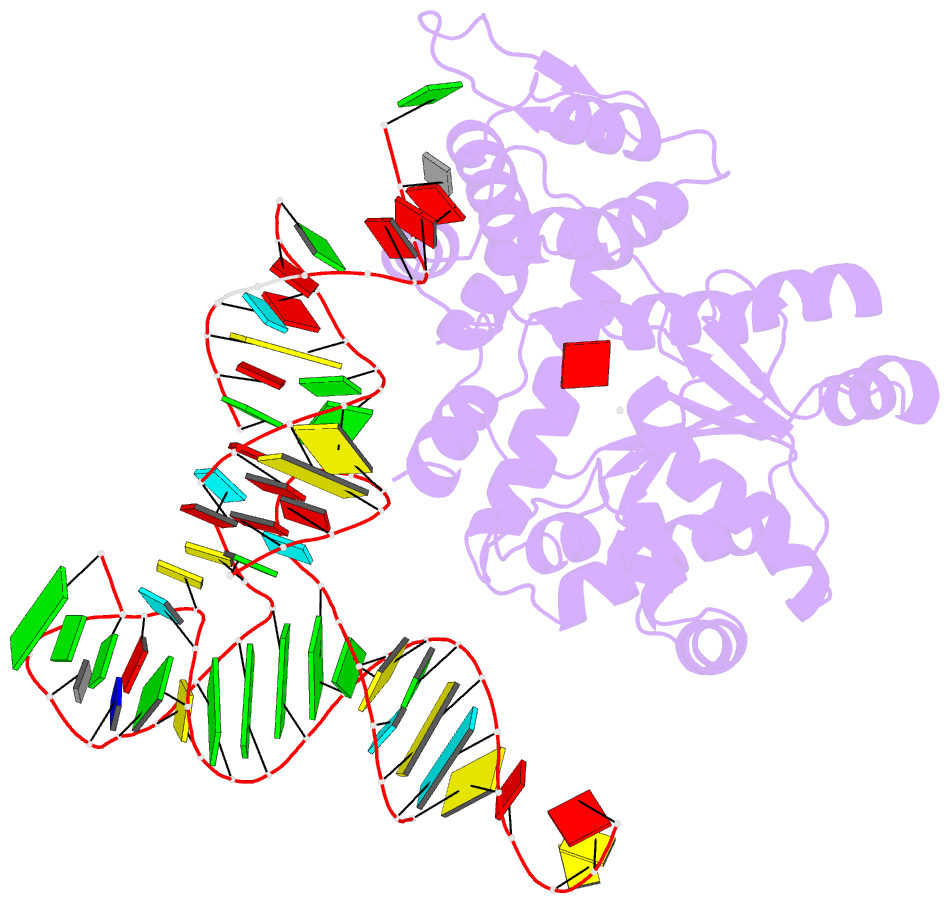Summary information and primary citation
- PDB-id
- 2dlc; SNAP-derived features in text and JSON formats;
DNAproDB
- Class
- ligase-trna
- Method
- X-ray (2.4 Å)
- Summary
- Crystal structure of the ternary complex of yeast tyrosyl-trna synthetase
- Reference
- Tsunoda M, Kusakabe Y, Tanaka N, Ohno S, Nakamura M, Senda T, Moriguchi T, Asai N, Sekine M, Yokogawa T, Nishikawa K, Nakamura KT (2007): "Structural basis for recognition of cognate tRNA by tyrosyl-tRNA synthetase from three kingdoms." Nucleic Acids Res., 35, 4289-4300. doi: 10.1093/nar/gkm417.
- Abstract
- The specific aminoacylation of tRNA by tyrosyl-tRNA synthetases (TyrRSs) relies on the identity determinants in the cognate tRNA(Tyr)s. We have determined the crystal structure of Saccharomyces cerevisiae TyrRS (SceTyrRS) complexed with a Tyr-AMP analog and the native tRNA(Tyr)(GPsiA). Structural information for TyrRS-tRNA(Tyr) complexes is now full-line for three kingdoms. Because the archaeal/eukaryotic TyrRSs-tRNA(Tyr)s pairs do not cross-react with their bacterial counterparts, the recognition modes of the identity determinants by the archaeal/eukaryotic TyrRSs were expected to be similar to each other but different from that by the bacterial TyrRSs. Interestingly, however, the tRNA(Tyr) recognition modes of SceTyrRS have both similarities and differences compared with those in the archaeal TyrRS: the recognition of the C1-G72 base pair by SceTyrRS is similar to that by the archaeal TyrRS, whereas the recognition of the A73 by SceTyrRS is different from that by the archaeal TyrRS but similar to that by the bacterial TyrRS. Thus, the lack of cross-reactivity between archaeal/eukaryotic and bacterial TyrRS-tRNA(Tyr) pairs most probably lies in the different sequence of the last base pair of the acceptor stem (C1-G72 vs G1-C72) of tRNA(Tyr). On the other hand, the recognition mode of Tyr-AMP is conserved among the TyrRSs from the three kingdoms.





